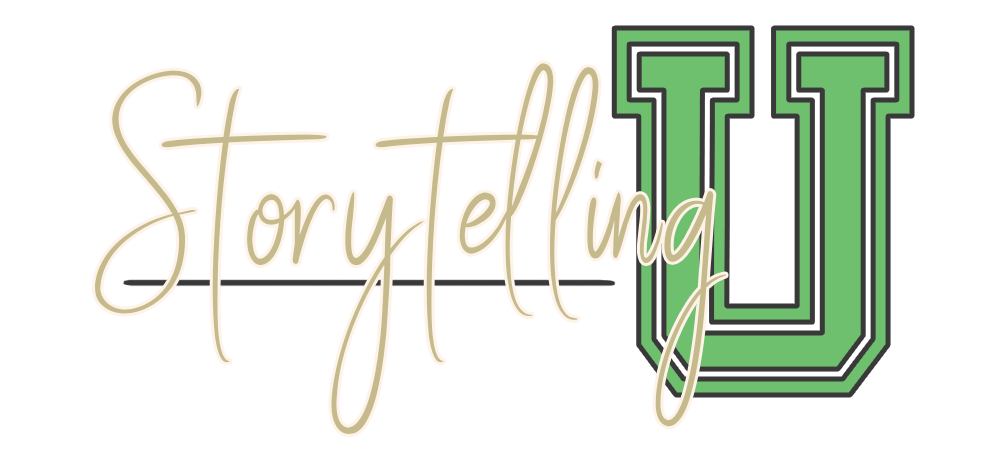Storytelling Techniques:
The Ultimate Guide to Crafting Compelling Stories
Once upon a time, in a distant land, there was a small business owner.
The business owner was hardworking and ambitious. They were diligent, conscientious, sold high-quality products, and valued every customer that walked through the door.
However, they had a problem.
Try as they might, the business owner couldn’t find a way to compete with their arch-nemesis: the big corporation down the road. They were too well established, had too many resources, and set their prices too low for customers to resist.
The business owner was running out of ideas. They’d handed out pamphlets, told everyone about their amazing merchandise, started new product lines, and put signs up about the virtues of shopping locally. They’d even tried dropping their prices.
But, alas, nothing seemed to work…
…Can you relate to the business owner in our tale?
Are you finding it hard to beat the competition? Are you having trouble standing out from the crowd? Maybe you’ve had some success already but are finding it hard to break through to the next level?
Whatever the case, we have a solution:
Stories.
That’s right, the age-old art of storytelling could be the answer to your marketing prayers! Done well, it can skyrocket the success of your business, humanize your brand, and produce a surge of new leads, conversions, and sales.
If you’re in hot pursuit of those kinds of outcomes, then this post should help.
Read on for a deep dive into storytelling techniques. By the end of this guide, you should have everything you need to start writing and sharing engaging, persuasive, and effective stories. Enjoy!
Storytelling Basics
Let us start by saying there’s no right or wrong way to write a story.
There are no rules, per se. You can do what you please.
Great storytellers don’t follow a cookie-cutter approach. In fact, the very best stories (particularly those in a business context) are deeply authentic.
Think about the likes of Brene Brown, Seth Godin, and Malcolm Gladwell. These guys and girls use their own voices, leverage their own personalities, and speak from their own perspectives.
You should strive to do the same.
By the same token, though, there are certain elements and approaches to storytelling – a recipe, if you will – that tend to produce positive outcomes.
And that’s what we want to focus on today, beginning with the basics.
In this first section, we’ll run through the rudiments of any story worth its salt.
1. Characters
We know, we don’t have to tell you what a character is!
The Joker, Gandalf, Indiana Jones, Yoda, Don Vito Corleone…these household names are just a few famous characters to have graced our books and screens.
They’re the personalities and protagonists of a story. And they give it life. Stories (quite literally) wouldn’t be complete without them.
Not only does the plot (more on this next) revolve around characters, but they also foster a sense of connection to a story that compels readers and listeners to keep listening, watching, or reading.
Simply put, without characters, people wouldn’t care what happens next.
2. Plot/plot devices
The plot of a story is what actually happens in it – the course of events that takes your characters (not to mention the audience) on a journey from A to B.
A cohesive plotline that follows a pattern of cause and effect (bear with us!) gets people interested. Again, it makes people want to find out what’s going to happen.
That “cause and effect” part’s crucial though.
A good plot isn’t just a random sequence of events. For example, if Johnny goes to a bowling alley, grabs a bite to eat, and then drives home, you don’t have a story. But if he goes to a bowling alley, meets a stranger who asks to have dinner with him, and then tells him he has to drive home to save his family from a dire fate, you do.
You see? Cause and effect.
3. Setting
If the plot is what happens, the setting is where everything goes down.
This can be broad (e.g. the Harry Potter books are set in the United Kingdom) and specific (e.g. most of the Harry Potter plot takes place at Hogwarts School of Witchcraft and Wizardry).
Of course, at a macro level, the world of Harry Potter straddles the real (the station they catch the train to Hogwarts from is Kings Cross, in London) and make-believe as well (platform 9 and ¾ is purely fictitious).
Your stories can reside in a similar smorgasbord of settings if you so desire.
Whatever world your stories reside in, it’s your job as a storyteller to describe it to your audience. The more vivid the description, the more they’ll be able to picture it.
4. Theme
The theme is the driving force behind any story.
Think of it as your “why” for the tale- the reason you’re telling it in the first place.
What are you trying to say? Is there a message you’re trying to put across? Or is there a general feeling you’re trying to evoke?
Start here. Having your theme in mind from the outset will inform your plot, determine the nature of your characters, and provide a useful point around which to pivot the storyline.
It’ll also lift the story to a new level, making it more meaningful for the audience.
5. Style
A story’s style is how it’s told (…or written, or produced).
It encapsulates a lot: the words you use, the phraseology, the pacing; the length of your sentences, and how the plot flows from beginning to end.
Your style could be simple and concise, or deeply descriptive and borderline verbose. It doesn’t really matter (although you should steer clear of verbosity!).
Remember: there’s no right or wrong way to tell a story. In the same way, there’s no right or wrong style of prose! The most important thing is to be authentic – to develop your own way of writing, speaking, and sharing.
6. Point of view
Another aspect of a story’s style is its point of view (POV). Or, to put it another way, the perspective from which you tell it.
Will you talk from a first-person POV (“I”, “we”), or keep it at arm’s length by using the third person (“he”, “she”, “they”)? There’s second-person too (i.e. “you”, as in “you’re in the mall when you see a man staring at you from across the aisle”), as well as a couple others, such as “third-person omniscient”.
Whatever perspective you use has a significant impact on the story. For instance, first-person tends to feel more personal and intimate, whereas third-person can seem more formal in nature.
The POV affects the actual narrative as well. A romance told from the eyes of the female protagonist, for instance, will read very differently from one that’s written by her jealous sister.
Keep this in mind when writing/telling your tales. You could, for instance, select a POV that best presents the theme.
Key Elements to Consider When Creating Compelling Stories
The most compelling stories share various elements that set them apart. In this section, we’ll run through the most important ones to incorporate into your own storytelling endeavors:
1. Start with a Hook to Capture Your Reader’s Attention
You could have the best rod and bait in the world. But if you don’t have a hook, then you aren’t going to catch any fish.
It’s similar in storytelling.
The hook – those first few lines of your story – is fundamental to success. As in marketing, this is where you grab your audience’s attention. It’s the linguistic equivalent of clinking your glass with a knife before giving an impromptu speech.
A good hook cuts through the noise long enough to draw people in.
And that’s vital. After all, your audience is busy and, according to some sources, has an attention span shorter than a goldfish. Put together, the odds are stacked against you in terms of getting them to listen!
The hook is your “in”.
Here are 2 examples of awesome storytelling hooks:
i. Admiral William H. McRaven’s 2014 viral commencement address
“It’s been almost 37 years to the day that I graduated from UT. I remember a lot of things from that day…”
ii. Oprah Winfrey’s 2018 Golden Globes award acceptance speech
“In 1964, I was a little girl sitting on the linoleum floor of my mother’s house in Milwaukee, watching Anne Bancroft present the award for best actor at the 36th Academy Awards. She opened the envelope and said 5 words that literally made history…”
See what they both did? They hooked you. They got your attention and made you want to hear more! Try to do the same at the start of your stories.
2. Use Strong Images and Sensory Details to Bring the Story to Life (“show, don’t tell”)
Let’s do a quick thought experiment. Think about your day-to-day life.
Now try to imagine it without access to your senses. What would it be like without your sight, hearing, and sense of taste, touch, and smell?
It’s impossible to know, of course, but we’d bet the mortgage that it wouldn’t be anywhere near as vivid. That’s because our senses govern our perception – they give our world life.
It’s the same reason sensory details (aka describing how something feels, smells, tastes, sounds, or looks) are such valuable storytelling devices. They paint scenes in bright, effervescent colors, enabling the audience to visualize the scene.
In the world of storytelling techniques, using strong imagery and sensory descriptions feeds into the notion of, “show, don’t tell”. Often referred to as “The Golden Rule” of writing, the idea’s simple:
Don’t be too explicit with your details.
Let the audience deduce what’s happening instead. As Chekhov once said, “Don’t tell me the moon is shining; show me the glint of light on broken glass.”
3. Create a Sense of Anticipation by Hinting at What’s Going to Happen Next
It’s often said that the best stories start at the end.
The opening paragraph of an “outdoor adventure gone wrong” epic might describe the harrowing scene the entire plot revolves around. Then it’ll skip to back in time to what led up to that point and eventually pick up where it began.
As a member of the audience, you’re left wanting to find out how on earth the main character ended up in that predicament.
You don’t have to follow suit in your own stories, but you could (and should!) at least hint at what’s to come.
In literature, this process is called foreshadowing. By giving little clues that something’s about to happen, you can keep the audience guessing and compel them to keep paying attention!
Think about Game of Thrones. Ned Stark says “winter is coming” so many times in the first season you know for sure there’s trouble around the corner.
But it can be more explicit than that too. At the end of a chapter in your book, for example, you could write something obvious like, “I couldn’t have imagined what happened next”.
Whatever approach you take, dropping these hints will create a sense of anticipation that always goes down well.
4. Use Dialogue (Or Internal Monologue) And/or Action to Make the Story More Dynamic
Literary devices don’t get much more powerful (or useful) than dialogue. It gives stories color, imbues characters with personalities, and drives the plot forward.
Ultimately, dialogue makes a story more dynamic.
It’s hard to create tension in a story without it or to build suspense in the lead-up to a key scene. It’s also harder for the audience to relate to each character, to believe they could be real, and/or decide whether they even like them.
For instance, would Hermione Granger be the witch we know and love if she’d never exclaimed, “It’s wingardium LeviOsa, not LevioSA!” or “Now if you two don’t mind, I’m going to bed before either of you come up with another clever idea to get us killed – or worse, expelled”?
Of course not! Your business stories might not include dialogue of this ilk, yet that doesn’t mean you can’t use it.
Whether you’re writing a blog post or giving a TED talk, you might find it more applicable to detail the internal monologue. Let the audience know what was going through your mind, what your self-talk was, and what your inner critic whispered in your ear. It’ll bring your stories to life and humanize them in the process.
5. Bring the Story to a Satisfying Conclusion
There’s nothing more frustrating than a disappointing ending.
It makes the whole process of listening to a story feel like a waste of time- like hearing a joke with no punchline. You’re left thinking, “Was that really it?”
By contrast, there’s nothing more satisfying than a great ending to an equally incredible story. It’s both a tragic and joyous affair. You’re upset it’s over, but feel the gratification that comes from a well-resolved plot.
So, we can’t say it enough:
The ending is pivotal!
It’s the triumphant conclusion to the protagonist’s journey. You’ve set the stage, allowed the drama to unfold, and drawn the reader in. Now it’s time to give them a reward for sticking with you.
To do so, there are a few key tenets of a good ending to include.
The first, as we just hinted at, is resolution. Think of this as getting closure at the end of a relationship. You take the core plotline, with all its conflict, twists, and turns, and wrap it up (with a bow on the top).
Next is transformation. Your main character? Make sure the ending demonstrates how they’ve changed throughout the story.
The third component is suspense. Protagonists never breeze through to a happy ending! There’s always some last-minute tension that makes you (i.e. the audience) question if they’ll succeed. It makes the ending feel even better when they do.
Last but not least, there’s often an element of surprise. Predictability is the bane of any audience member’s life. Entertain them with an unexpected ending.
Different Story Structures to Consider
It’s one thing to know what to incorporate into a story. It’s another thing altogether to know how to structure it into a cohesive narrative.
Thankfully, you don’t have to reinvent the wheel here! There are plenty of popular and well-established storytelling structures you can use “off the shelf” (or look to for inspiration). Here are 3 of them:
1. The Three-Act Structure
The three-act structure is found in everything from the Wizard of Oz, Star Wars, and even Die Hard. It’s ubiquitous – and for good reason!
It has a strong connection to the traditional idea that stories should have a beginning, middle, and end, but takes it a step further by defining particular events that should occur in each “act”.
Act 1 is known as the Exposition. This is where you set the stage for your story. Lasting about 25% of the tale, you introduce the setting, your protagonist, their values, and the various daily struggles they face.
Importantly, this is also when the “inciting incident” occurs – the big event that sets everything else in motion. An example would be in The Lord of the Rings when Bilbo finds the “One Ring to rule them all” at the bottom of the river.
Act 2 is the Confrontation. Taking up approximately half of the story, your protagonist starts their adventure, realizes the challenges ahead, and then suffers a cataclysmic setback. After licking their wounds, they get back into the fight.
Act 3 is called Resolution. It runs for the final 25% (although it’s often less) of the story and involves the protagonist facing up to the bad guy (otherwise known as the antagonist). There’s a moment of doubt, but, ultimately, good beats evil.
2. The Hero’s Journey (aka Monomyth)
The Hero’s Journey is as well-known (and widely used) as story structures come!
Also known as “the monomyth”, it features in tales as old as time and from cultures around the globe. We could write an entire article on the Hero’s Journey, but here’s the quick-fire version:
There are 12 stages to the protagonist’s journey that move in order as the plot progresses:
1. The Ordinary World
You’re introduced to the protagonist in their day-to-day life.
2. Call to Adventure
Something happens. The protagonist has no choice but to leave their life behind. The adventure begins.
3. Refusal of the Call
The hero doesn’t rush forth with gusto. They’re reluctant to accept their fate. They might outright refuse…until something changes their mind.
4. Meeting the Mentor
The hero isn’t strong or experienced enough to go it alone. A mentor enters the fray and shows them the way.
5. Crossing the First Threshold
Your protagonist is finally ready. They enter the adventure in earnest. There’s no going back now.
6. Tests, Allies, Enemies
Setbacks arise in abundance. New characters hit the scene – some are friends, others are foes.
7. Approach to the Inmost Cave
The hero’s desired outcome is within reach, but it’s also never been more dangerous. Of course, the risk can be both internal and external.
8. The Ordeal
The protagonist is tested like never before. It’s a grim, earth-shaking moment that often results in failure. It determines all actions to come.
9. Reward (Seizing the Sword)
The hero pushes on and is rewarded. They gain something they’ve been searching for.
10. The Road Back
With their newfound glory in tow, the protagonist attempts to return home (literally or figuratively) to their former life. Alas, further dangers await.
11. Resurrection
The final test – the climax of the entire tale. Will Frodo throw the ring into the lava? Will Rocky beat Creed? Will Luke defeat Darth Vader? It’s a make-or-break moment, fraught with peril but primed with potential glory.
12. Return with the Elixir
Our hero is triumphant. They return home to the accolades they deserve.
Top tip: don’t feel like you have to follow these story structures to a tee. With the Hero’s Journey, for instance, it’s common practice to treat it as a guide – taking what you want and ditching the rest.
3. Freytag’s Pyramid
Sometimes called Freytag’s Triangle, this structure’s a little tricky to describe, so bear with us!
It theorizes that stories can be broken into 2 halves: the play and counterplay. The point where they meet in the middle?
That’s the climax.
If each half is a right-angled triangle, you could put them together to create a pyramid shape. This, in turn, contains 5 distinct dramatic elements:
The plot moves from one element to the next as the story progresses.
The introduction roughly translates to “Act 1” of the 3-Act structure, so we won’t go into detail on that. Rising movement is where the tale builds momentum (stages 5 and 6 of the Hero’s Journey).
And the climax is, well…the climax – a crucial inflection point to which the story progresses and from which the story continues.
Falling action resembles the Reward and Road Back in the Hero’s Journey. The story is leading up to a tragedy; a sense of suspense lingers in the air.
Finally, there’s the catastrophe itself – an event akin to the “resurrection” in the Hero’s Journey, which marks the story’s resolution.

Using Analogies and Metaphors to Tell Stories
In our penultimate section, we want to discuss another helpful (nay, irreplaceable) storytelling technique: the use of metaphors and analogies. Stick with us, your stories won’t be as powerful without them!
What Is a Metaphor?
A rather prosaic definition of a metaphor is, according to Merriam-webster:
“A figure of speech in which a word or phrase literally denoting one kind of object or idea is used in place of another to suggest a likeness or analogy between them”.
In other words, you describe something by saying it’s something else!
Don’t mistake this for a simile. They’re similar concepts (all similes are metaphors, but not all metaphors are similes…if that makes sense), but function differently.
Similes compare 2 things using the words “like” or “as”. For metaphors, you simply state the comparison. Here’s an example:
And analogies?
Well, they serve a similar comparative purpose, but they also try to explain something in the process. An example could be, “What my colleague was doing seemed as useful as raking leaves before a hurricane”. While that looks like (and is) a simile, you’re also expressing the futility of the deed, thus turning it into an analogy.
Benefits/Purpose of Metaphors
Those definitions might make metaphors sound mundane. But don’t be fooled!
They’re one of the most effective ways to a) describe a scene and b) make your stories more vibrant and creative.
For instance, you could say:
You see? Metaphors imbue stories with life, intensity, and emotion.
First and foremost, though, they help simplify complex ideas for the audience. They’re descriptive tools that chisel understanding into peoples’ minds, like a sculptor chipping away at a slab of stone (…notice the simile?!).
Use them in your stories to provide clarity; elucidate important topics you want/need the audience to comprehend.
Why They’re So Effective
Sometimes talking literally doesn’t cut the mustard.
Whether a description’s too complicated, dull, or abstract, sometimes you need to activate peoples’ imagination to help them both pay attention and understand what you’re saying. Metaphors do precisely that.
They create images in peoples’ minds, which is helpful to us visual creatures! The pictures they paint help us to see (quite literally) what someone’s talking about.
Examples of Well-Known Metaphors and Analogies
How to Create Your Own Metaphors
Coming up with your own metaphors is relatively straightforward when you understand what a) a metaphor is and b) you’re trying to describe.
Take the concept, person, or object and think about its characteristics. Does it remind you of anything? Does it bear resemblance to anything else you’ve encountered? The less obvious the association, the more powerful the metaphor.
Consider the mood/tone you’re trying to get across as well. The point of comparison and choice of language should relate to it.
Helpful Storytelling Language
Last but not least, we’re going to run through some helpful linguistic tools to use in your business stories.
Purpose of Adjectives
Adjectives are descriptive words that add detail to a noun (and our stories…). They make everything more interesting and help you paint a picture! Adjectives also provide more specific information about something.
Suddenly, you aren’t just talking to a man. You’re talking to an old, wiry, and serious man with long hair and a clipped British accent.
List of Adjectives
Adorable, aggressive, bored, blue-eyed, calm, clumsy, devious, drab, faithful, gleaming, gaping, happy, innocent, impossible, jittery, lively, magnificent, nutty, outstanding, powerful, repulsive, silly, successful, tired, tough, unusual, vivacious, wide-eyed.
Purpose of Transition Words
Transition words are crucial components of a clear, well-organized, and free-flowing story. They bridge ideas, help you organize information, signal connections between ideas, and, ultimately, keep people reading!
List of Transition Words
Also, in the same way, so too, next, then, finally, but, however, in spite of, even, in fact, on the other hand, nevertheless, in addition, besides, furthermore, finally, consequently, to summarize.
Why Use Verbs in Your Calls to Action (CTAs)?
Don’t forget your CTAs! The strongest ones incorporate verbs. After all, verbs tend to describe an action, and that’s exactly what you want your audience to take. Bonus points if you use verbs that create a sense of urgency.
List of Good CTA Verbs
Boost, grow, discover, learn, explore, activate, snag, seize, score, click, open, download, expand, get (e.g., “Get the e-book,” “Get it now,” “Get it free”), sign up.
Wrapping up
In this guide, we dove into the intricacies of storytelling, unveiling key technical elements from characters and plot to setting, theme, style, point of view, and more. Armed with these insights, you’re ready to weave powerful, impactful narratives that connect deeply with your audience–regardless of your storytelling background or expertise. It may be the end of this guide, but it’s just the beginning of your storytelling journey.
If you found this guide helpful, don’t forget to bookmark this page and please send it to your entrepreneurial friends and colleagues!




